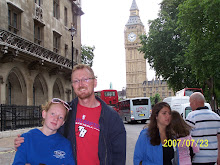So here we go, post # 1. Now I have a blog, I guess I better have something to say. I am creating this blog as part of an assignment for Librarianship, Part 3. It will serve as a reflective journal for me throughout the remainder of the course, with an initial focus on webquests, their value and potential applications. Here are my initial thoughts on the subject as posted on the EC4 discussion page.
I like the theory of the webquest a lot. What could be better than teams of students working collaboratively, using multiple sources of information, and compiling, synthesizing, organizing, creating, solving, etc. The potential to use higher order thinking is tremendous, and if the task designed can be an authentic, real-world one, then so much the better. The students will be hooked and off and running if the webquest is well designed and easy to follow.
Now for the reality. As my colleagues have all pointed out, the time required to design and build a really good webquest is daunting. Finding suitable (reading level, content, ease of navigation, etc.) sites that fit your task can take hours, then putting it all together ... We all know this is huge! I see it as a summer time project, or not at all.
I attended a workshop one evening years ago about designing webquests. I put together a simple one based on designing and building a bridge. It was a cross between a compilation and design task. The students had to gather info about different bridge designs and their applications. This was primarily done through the Nova site, that involved on an online quiz about matching designs to specific sites. The students had to also fill in spec sheets for each type of bridge. I supplied these sheets, so there was no higher order thinking involved here. One neat feature were a few video links; one showed the Tacoma Narrows bridge buckling a tumbling in high winds. Then the students were put into teams and had to design a bridge using their new knowledge. There were design and materials constraints (e.g. mass, length, glue types, etc.). It ended up working quite well. However, I only used it once, and it took a lot of time to create. I haven't created one since.
Using a webquest put together by someone else is another option. I find that the chances of a predesigned webquest meeting my needs and those of my students to be slim. At least this observation is based on what I have seen online so far. I searched for webquest about explorers or First Nations Peoples of Canada and didn't find anything I could use. (There were some for secondary for Native issues.) I really liked the "Lighthouse Diamond Thief Webquest" as it combines the scientific model into solving a mystery, and kids love to play detective. But I couldn't really say that it is in a form that is ready to use by my students. We teachers tend to like our own stuff best because it makes sense to us, and we designed it with our students' interests and abilities in mind.
That leads me to another problem I have with third party webquets. Links tend to become inactive after a while. Even the Lighthouse webquest had a number of dead links, which really limits its usefulness. Obviously something that you have just put together yourself will have working links.Collaboratively designed webquests could work. Then the group shares the work of coming up with an idea and tasks, finding links, developing the pages using the template,and developing rubrics for assessment. If one can find the right group of colleagues with the time available and interest in this kind of project, then I think it could be great. For a lot of junior and intermediate teachers with split grades and large class sizes, I don't forsee designing a webquest as being high on their to-do list anytime soon. As a project for faculty of ed. or graduate students with an interest in this area, I say go for it!
Sunday, November 23, 2008
Subscribe to:
Post Comments (Atom)

No comments:
Post a Comment